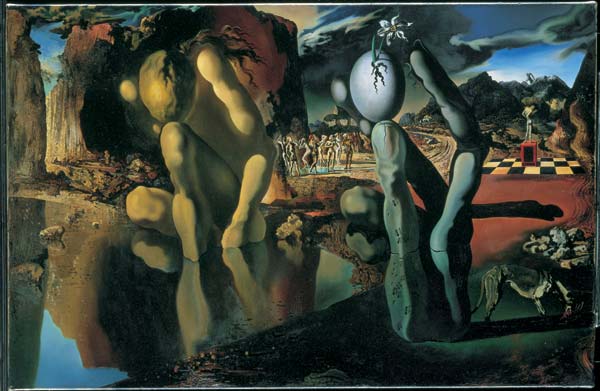Today being the birthday of the late Salvador Dali (he would have been 99) this week’s choice of picture is his scintillatingly bizarre Metamorphosis of Narcissus. It was created in 1937, before the artist’s long descent into self-parody, and can be seen at Tate Modern.
Dali himself was proud of this painting. When he was granted an audience with his hero, Sigmund Freud, in London in the summer of 1938, it was the one example of his own work that the painter took along with him. Freud, who was eighty-two years old and in ill-health at the time, evidently enjoyed meeting his young Spanish admirer. But as he explained in a letter written the following day to the writer Stefan Zweig, a mutual friend who had arranged the meeting, the psychoanalyst had mixed feelings about the picture with which Dali had sought to impress him:
“Until now I was inclined to regard the Surrealists – who seem to have adopted me as their patron saint – as 100 percent fools (or let’s rather say, as with alcohol, 95 per cent). This young Spaniard, with his ingenuous fanatical eyes, and his undoubtedly technically perfect mastership, has suggested to me a different estimate. In fact, it would be very interesting to explore analytically the growth of a picture like this. From a critical point of view, one might still say, that Art by its definition would refuse enlarging its scope so widely, unless the quantitative relation of unconscious material and pre-conscious elaboration should be kept within certain limits. In any case there are serious problems from the psychological point of view.”
Dali’s Metamorphosis of Narcissus alludes to the Greek myth of a handsome youth who spurns the love of his admirers. For rejecting a beautiful nymph called Echo, whose own fate...


